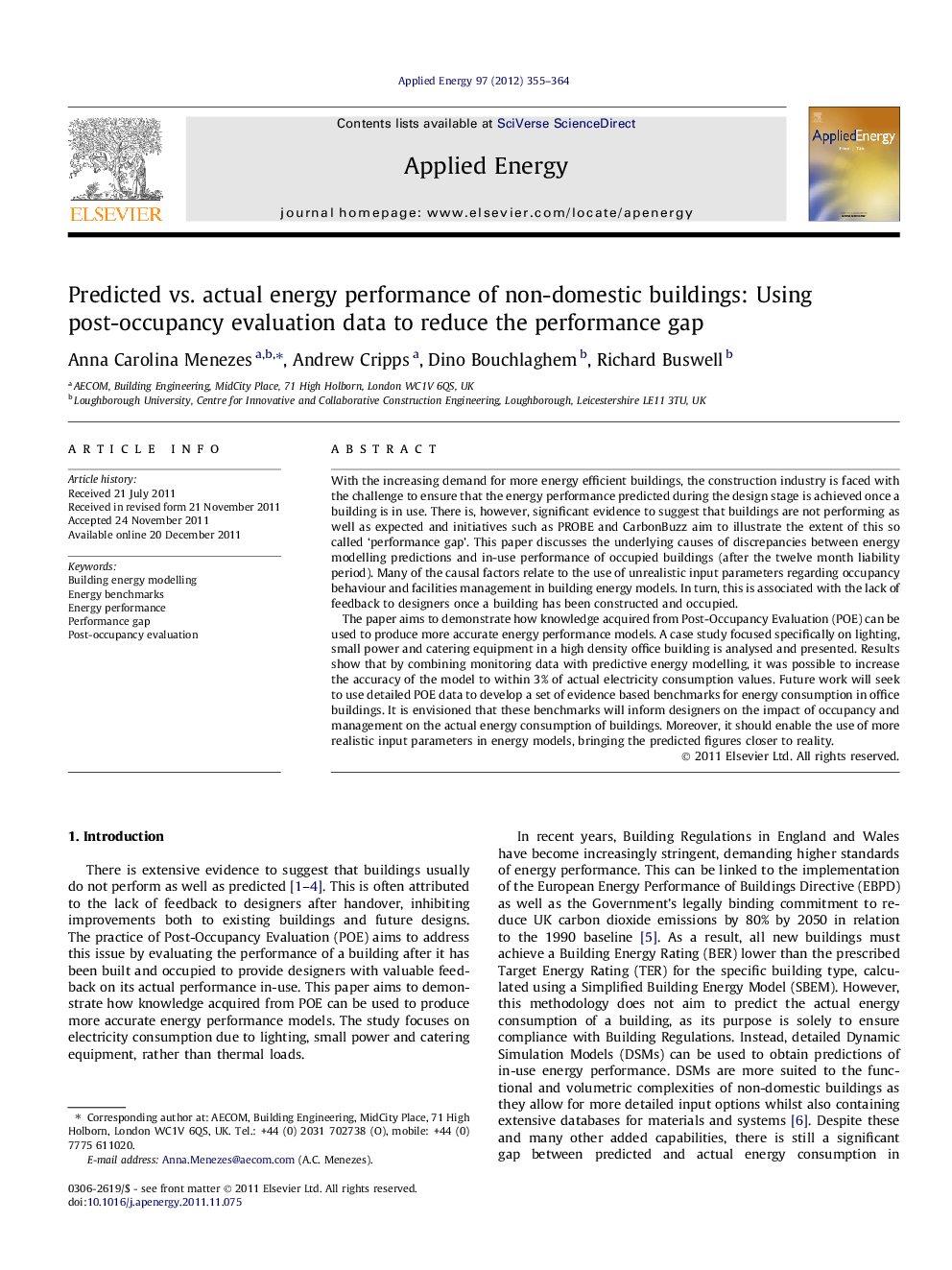| کد مقاله | کد نشریه | سال انتشار | مقاله انگلیسی | نسخه تمام متن |
|---|---|---|---|---|
| 243516 | 501930 | 2012 | 10 صفحه PDF | دانلود رایگان |

With the increasing demand for more energy efficient buildings, the construction industry is faced with the challenge to ensure that the energy performance predicted during the design stage is achieved once a building is in use. There is, however, significant evidence to suggest that buildings are not performing as well as expected and initiatives such as PROBE and CarbonBuzz aim to illustrate the extent of this so called ‘performance gap’. This paper discusses the underlying causes of discrepancies between energy modelling predictions and in-use performance of occupied buildings (after the twelve month liability period). Many of the causal factors relate to the use of unrealistic input parameters regarding occupancy behaviour and facilities management in building energy models. In turn, this is associated with the lack of feedback to designers once a building has been constructed and occupied.The paper aims to demonstrate how knowledge acquired from Post-Occupancy Evaluation (POE) can be used to produce more accurate energy performance models. A case study focused specifically on lighting, small power and catering equipment in a high density office building is analysed and presented. Results show that by combining monitoring data with predictive energy modelling, it was possible to increase the accuracy of the model to within 3% of actual electricity consumption values. Future work will seek to use detailed POE data to develop a set of evidence based benchmarks for energy consumption in office buildings. It is envisioned that these benchmarks will inform designers on the impact of occupancy and management on the actual energy consumption of buildings. Moreover, it should enable the use of more realistic input parameters in energy models, bringing the predicted figures closer to reality.
► There is significant evidence that buildings do not perform as well as predicted.
► This study aims to bridge this gap by using Post-Occupancy Evaluation data.
► Focus on electricity consumption for lighting and small power in office buildings.
► Results demonstrate predictions within 3% of actual electricity consumption.
► Validation exercise demonstrates 6% deviation from actual electricity consumption.
Journal: Applied Energy - Volume 97, September 2012, Pages 355–364